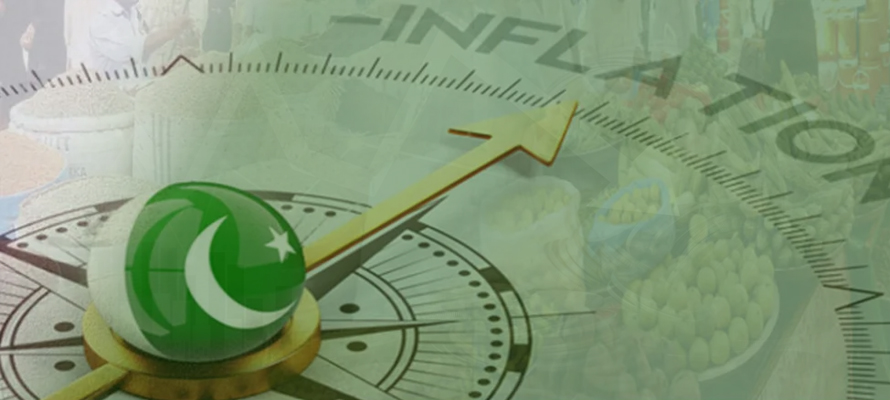Pakistan's inflation expected to stay elevated at 26% in FY24: World Bank

MG News | April 03, 2024 at 12:37 PM GMT+05:00
April 03, 2024 (MLN): Consumer price inflation in Pakistan is projected to remain elevated at 26% in FY24 due to domestic gas, electricity, and fuel tariff adjustments resulting in a significant increase in domestic energy prices, according to World Bank.
In view of the persistently high inflationary pressures, the SBP is expected to maintain a tight monetary policy stance in FY24.
“Inflation will gradually moderate in FY25–26 due to a high base effect and as global commodity prices ease,” it added.
Headline consumer price inflation rose to a multi-decade high of an average of 28.8% YoY in 1HFY24, up from 25% in 1HFY23, reflecting higher domestic energy prices, continued liquidity injections into the banking sector through open market operations (OMOs), and domestic supply chain disruptions.
Food inflation remained high, particularly impacting poor and vulnerable households that spend half of their budgets on food.
Transportation costs rose faster in rural areas, increasing the cost of accessing markets, schools, and health centers for the rural poor.
To mitigate the high inflation rates, the policy rate was held at 22%, implying negative real interest rates throughout 1HFY24.
In urban areas, energy inflation increased from 40.6% YoY in 1HFY23 to 50.6% in 1HFY24 due to significant increases in domestic energy prices.
Core inflation has continued to increase in both rural and urban areas, reflecting second round effects of persistently high energy prices (electricity, gas, and motor fuel) onto higher overall costs of production.
In urban areas, core inflation rose from 14.1% YoY in 1HFY23 to 18.4% in 1HFY24. In rural areas, core inflation is even higher and rose from 17.4% in 1HFY23 to 25.9% in 1HFY24.
Food inflation remained high but steady over 1HFY24. On average, during 1HFY23 food inflation was 30.7% in urban areas and 33.5% in rural areas.
It rose to only 33.4% and 34.0% in urban and rural areas, respectively, in 1HFY24. The relatively smaller increase was partly due to a higher output of domestically produced food items combined with a decline in global food prices.
Copyright Mettis Link News
Related News
| Name | Price/Vol | %Chg/NChg |
|---|---|---|
| KSE100 | 138,597.36 256.32M | -0.05% -68.14 |
| ALLSHR | 85,286.16 608.38M | -0.48% -413.35 |
| KSE30 | 42,340.81 77.13M | -0.03% -12.33 |
| KMI30 | 193,554.51 76.19M | -0.83% -1627.52 |
| KMIALLSHR | 55,946.05 305.11M | -0.79% -443.10 |
| BKTi | 38,197.97 16.53M | -0.59% -225.01 |
| OGTi | 27,457.35 6.73M | -0.94% -260.91 |
| Symbol | Bid/Ask | High/Low |
|---|
| Name | Last | High/Low | Chg/%Chg |
|---|---|---|---|
| BITCOIN FUTURES | 117,670.00 | 121,165.00 117,035.00 | -1620.00 -1.36% |
| BRENT CRUDE | 69.23 | 70.77 69.14 | -0.29 -0.42% |
| RICHARDS BAY COAL MONTHLY | 96.50 | 0.00 0.00 | 2.20 2.33% |
| ROTTERDAM COAL MONTHLY | 104.50 | 104.50 104.50 | -0.30 -0.29% |
| USD RBD PALM OLEIN | 998.50 | 998.50 998.50 | 0.00 0.00% |
| CRUDE OIL - WTI | 66.03 | 67.54 65.93 | -0.20 -0.30% |
| SUGAR #11 WORLD | 16.79 | 17.02 16.71 | 0.05 0.30% |
Chart of the Day
Latest News
Top 5 things to watch in this week
Pakistan Stock Movers
| Name | Last | Chg/%Chg |
|---|
| Name | Last | Chg/%Chg |
|---|




 Weekly Forex Reserves
Weekly Forex Reserves